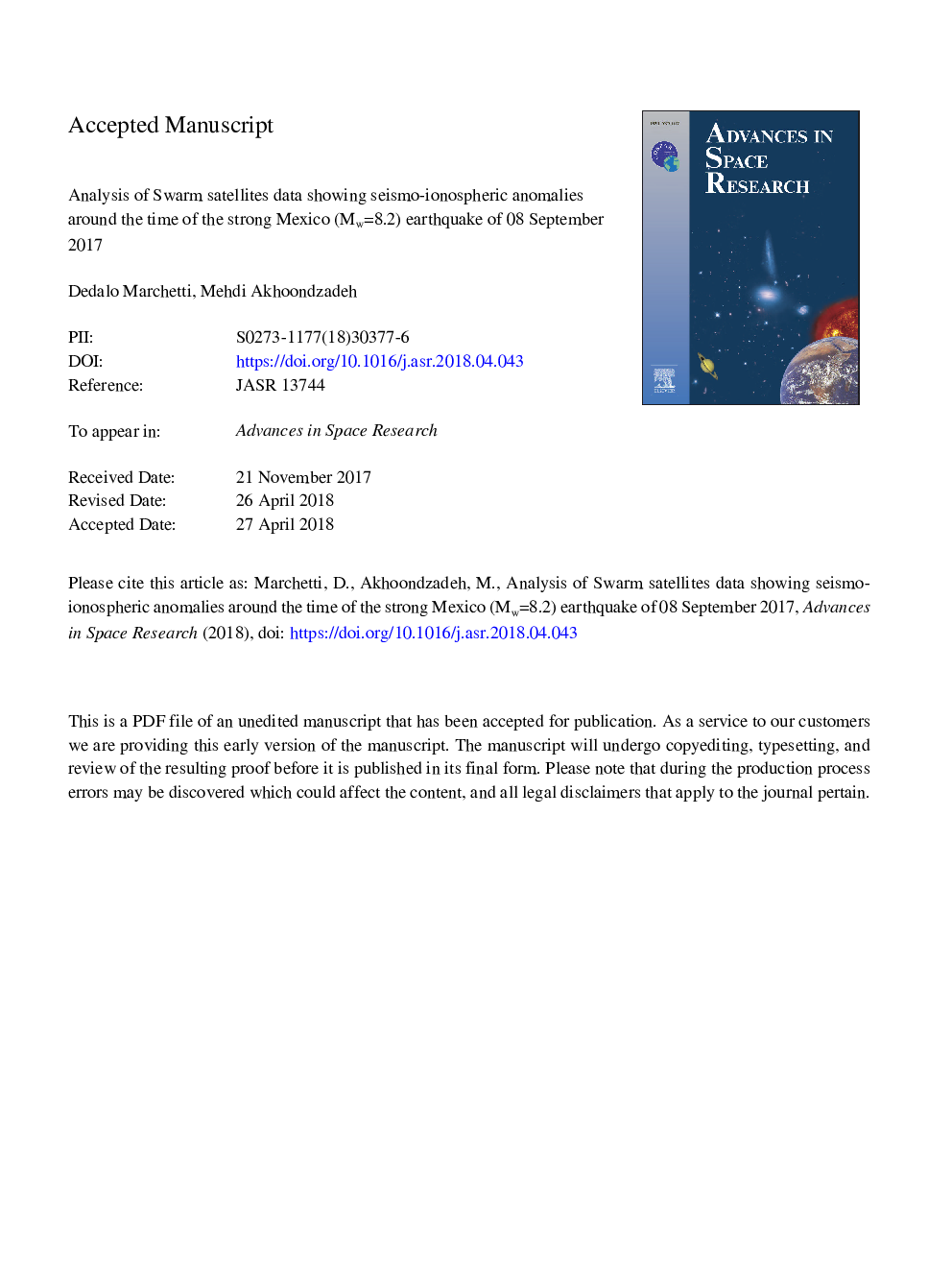| Article ID | Journal | Published Year | Pages | File Type |
|---|---|---|---|---|
| 8131724 | Advances in Space Research | 2018 | 22 Pages |
Abstract
In 98â¯km SW of TresPicosin Mexico (15.022â¯N, 93.899â¯W, 47.40â¯km depth) a powerful earthquake of Mw = 8.2 happened at 23:49:19 LT on September 07 (04:49:19 UTC on September 8), 2017. This paper presents the results of Swarm satellites (Alpha, Bravo and Charlie) data analysis around the Mexico earthquake epicenter during the period of 01 April to 15 October 2017. The visual inspection of the time series of 6 parameters measured using electric field instrument, absolute and vector field magnetometers on board each Swarm satellite shows a clear anomaly exactly on the earthquake day. Variations of the electron density and temperature, magnetic scalar and vectors (X, Y, Z) components exceed the limited bounds (M±1.25ÃIQR) by several hundred percent. Analysis of the three satellites orbits inside Dobrovolsky's area on earthquake day acknowledges the detected anomalous variations. It should be noted that on earthquake day, the geomagnetic indices Dst, Kp and F10.7 have exceeded the allowed values and even reach the maximum values during the studied time period. Therefore it is difficult to acknowledge the seismicity nature of the detected anomalies on earthquake day. A very interest result is the detection of anomalies in different observables of ionosphere from about 130â¯days before the earthquake. Since the Swarm is currently the only satellite mission that their data can be used to continuously monitor some of the important parameters of the ionosphere, therefore creating a monitoring system of ionosphere based on the Swarm data as an introduction to an earthquake warning system is proposed.
Keywords
Related Topics
Physical Sciences and Engineering
Earth and Planetary Sciences
Space and Planetary Science
Authors
Dedalo Marchetti, Mehdi Akhoondzadeh,
